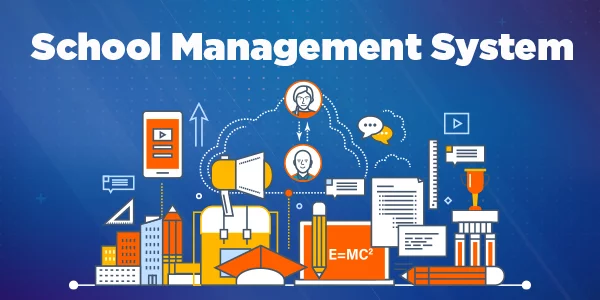The Ultimate Guide to School Management Systems

Schools are bustling hubs of activity, with countless students, teachers, and administrative staff working together to create a nurturing learning environment. In today’s digital age, managing these complex operations efficiently requires more than just manual paperwork and spreadsheets. That’s where school management systems (SMS) come in – powerful software solutions designed to streamline and automate various administrative tasks, enhance communication, and improve overall efficiency. In this comprehensive guide, we’ll delve into the intricacies of school management systems, exploring their features, benefits, implementation considerations, and more.
Understanding School Management Systems
What is a School Management System?
A school management system is a comprehensive software solution specifically designed to simplify and centralize various administrative tasks within educational institutions. These tasks may include student enrollment, attendance tracking, grading, scheduling, communication with parents, and financial management, among others. By digitizing and automating these processes, school management systems help educators and administrators save time, reduce errors, and improve overall productivity.
Key Features of School Management Systems
Student Information Management
One of the primary functions of a school management system is to maintain comprehensive records of student information, including personal details, academic performance, attendance records, and disciplinary history. This centralized database allows administrators to access vital student data quickly and efficiently, facilitating informed decision-making and personalized support.
Attendance Tracking
Automated attendance tracking is another essential feature of school management systems. By leveraging biometric technology, RFID cards, or mobile apps, these systems enable teachers to record student attendance accurately and in real-time. This data can then be used to identify patterns, monitor student behavior, and address attendance-related issues proactively.
Grade book and Assessment Tools
School management systems typically include built-in gradebook and assessment tools that allow teachers to record and track student grades, assignments, quizzes, and exams. These tools streamline the grading process, provide instant feedback to students, and generate comprehensive reports for parents and administrators, fostering transparency and accountability.
Communication and Collaboration
Effective communication between stakeholders – including teachers, parents, students, and administrators – is critical for the success of any educational institution. School management systems often feature integrated communication and collaboration tools, such as messaging platforms, forums, and announcement boards, enabling seamless communication and information sharing across the school community.
Scheduling and Timetabling
Managing complex schedules and timetables can be challenging for schools, especially those with multiple classes, subjects, and extracurricular activities. School management systems simplify this process by automating the creation and management of schedules, ensuring optimal resource allocation, minimizing conflicts, and maximizing efficiency.
Benefits of School Management Systems
Increased Efficiency and Productivity
By automating routine administrative tasks and streamlining workflows, school management systems help educators and administrators save time, reduce manual errors, and focus on more meaningful tasks, such as curriculum development and student engagement.
Enhanced Communication and Engagement
School management systems facilitate communication and collaboration between teachers, parents, students, and administrators, fostering a sense of community and partnership. Parents can stay informed about their child’s progress, upcoming events, and school announcements, while teachers can communicate important information quickly and effectively.
Improved Data Accuracy and Accessibility
Centralizing student data in a digital database reduces the risk of errors associated with manual record-keeping and ensures data accuracy and integrity. Authorized users can access up-to-date information anytime, anywhere, empowering them to make informed decisions and provide personalized support to students.
Better Decision-Making and Planning
With access to comprehensive data and analytics, school administrators can gain valuable insights into student performance, attendance trends, resource utilization, and more. This data-driven approach enables informed decision-making, strategic planning, and continuous improvement, ultimately enhancing the overall quality of education.
Enhanced Parental Involvement and Satisfaction
School management systems facilitate greater parental involvement and engagement by providing transparent access to student information, academic progress, and school activities. Parents appreciate the convenience of accessing this information online, leading to increased satisfaction and trust in the school’s ability to meet their child’s needs.
Implementing a School Management System
Assessing Needs and Requirements
Before selecting a school management system, it’s essential to assess your school’s specific needs, requirements, and goals. Consider factors such as the size of the school, the number of students and staff, existing infrastructure, budget constraints, and desired features and functionalities.
Researching and Evaluating Options
Once you’ve identified your school’s requirements, research and evaluate different school management systems available in the market. Consider factors such as ease of use, scalability, customization options, integration capabilities, customer support, and pricing models. Request demos, speak with vendors, and gather feedback from other schools to make an informed decision.
Planning and Implementation
Before implementing a school management system, develop a comprehensive implementation plan that outlines the timeline, roles and responsibilities, data migration strategy, training requirements, and contingency plans. Collaborate closely with the vendor and key stakeholders to ensure a smooth transition and minimize disruption to daily operations.
Training and Adoption
Effective training and user adoption are critical for the successful implementation of a school management system. Provide comprehensive training to administrators, teachers, staff, and parents to familiarize them with the system’s features and functionalities. Encourage feedback, address concerns, and promote ongoing support to facilitate a positive user experience.
Conclusion
In conclusion, school management systems play a vital role in modernizing and optimizing administrative processes within educational institutions. By digitizing and automating tasks such as student information management, attendance tracking, grading, communication, and scheduling, these systems enable schools to operate more efficiently, enhance communication and collaboration, and improve overall student outcomes. When selecting and implementing a school management system, it’s essential to assess your school’s needs, research available options, plan and execute the




